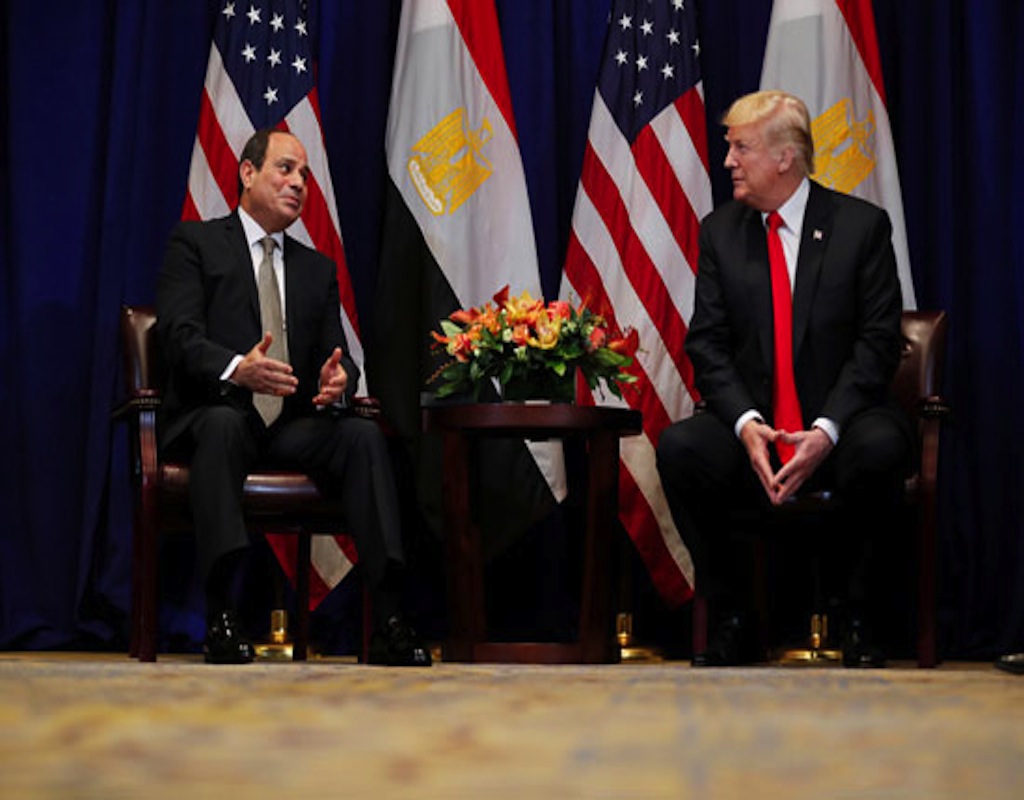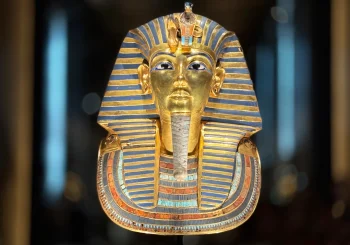Donald Trump’s latest threat to cut US aid to Egypt unless it endorses his controversial plan to relocate Palestinians and hand Gaza over to American control is yet another reminder of why Egypt must move beyond its reliance on American financial assistance. The United States has, for decades, provided Egypt with military and economic aid, but this support has always come with strings attached – many of which compromise Egypt’s sovereignty.
Egypt, however, is not the fragile state it was in the late 1970s when American aid first began flowing in large amounts. Today, it has a diversified economy, a growing defense industry, and a robust set of international partnerships. Far from being a lifeline, US aid is now more of a tool of political leverage – one that Egypt can do without.
The Nature of US Aid to Egypt
Since the 1979 Egypt-Israel Peace Treaty, Washington has been one of Cairo’s biggest financial benefactors. In 2023, Egypt received approximately USD 1.43 billion in US assistance, with USD 1.3 billion allocated to military aid and around USD 130 million directed toward economic development. Egypt is the second largest beneficiary of US military aid, with the first being Israel.
The military assistance is provided under the Foreign Military Financing (FMF) program, which allows Egypt to purchase American-made defense equipment and services. The United States has provided the Egyptian military with USD 51 billion in military aid since 1979.
The economic assistance component has been directed at education, governance, economic growth, agriculture, and health. However, this funding is minor compared to Egypt’s total economy and does not constitute a critical element of its development. Moreover, economic aid has steadily declined over the past two decades, reflecting a shifting US approach and the diminishing strategic significance of direct financial assistance.
The Strings Attached: How Aid Limits Egypt’s Sovereignty
While the nominal value of US assistance appears significant, its practical benefits are often overshadowed by the constraints it imposes. American aid does not come freely – it is tied to conditionalities that shape Egypt’s foreign policy, military procurement decisions, and even its domestic governance.
1. Foreign Policy and Military Dependence
US military aid to Egypt is primarily structured around American geopolitical objectives rather than Egypt’s national security needs. A large portion of Egypt’s FMF allocation must be spent on American weapons and defense systems, restricting the country’s ability to diversify its military procurement. Moreover, the US dictates how this aid can be spent – not only requiring Egypt to purchase American weapons, but also limiting which specific equipment Egypt can acquire.
Reportedly, Egypt has been restricted from purchasing more modern and critical weaponry, leading to a situation where it has stockpiled the same types of weapons for years. For example, Egypt has acquired an excessive number of M1A1 Abrams tanks with US assistance, many of which now sit unused. What Egypt truly benefits from is not additional conventional weapons but specialized weaponry, spare parts, technical expertise, and maintenance support for its existing arsenal.
The US has also attempted to control Egypt’s attempts to diversify its arsenal. Egypt’s military, one of the largest in the region, has long relied on US-made F-16 fighter jets, Apache helicopters, and M1 Abrams tanks. However, when Egypt sought to expand its military capabilities by purchasing Russian Su-35 fighter jets, the US threatened to impose sanctions under the Countering America’s Adversaries Through Sanctions Act (CAATSA). Such coercive tactics illustrate how US aid is less about supporting Egypt’s defense and more about ensuring continued dependence on American defense contractors.
In response, Egypt has increasingly diversified its defense procurement, securing deals with countries the US would find difficult to object to, such as France for Rafale fighter jets, Germany for submarines, and China for drones and missile systems. In 2024, Egypt also signaled a strategic shift by acquiring Chinese J-10C fighter jets to complement its aging F-16 fleet, bypassing Washington’s restrictions.
2. Political Pressure and Human Rights Conditions
Successive US administrations have used aid as a tool to pressure Egypt on human rights and governance issues. In recent years, portions of Egypt’s aid have been withheld or reallocated based on Washington’s assessment of human rights conditions. In 2023, for example, the Biden administration withheld USD 85 million in military assistance, citing concerns over political freedoms and human rights violations.
While human rights are important, the selective nature of US pressure undermines its credibility. Washington frequently ignores human rights abuses when it suits its geopolitical interests, as seen with other US allies such as Israel which is being investigated for war crimes and whose leader is wanted by the International Criminal Court. The conditionality of aid often appears more as a means of control rather than a genuine effort to improve governance and promote human rights.
3. Economic Constraints and the ‘Revolving Door’ of Aid
Unlike financial assistance from Gulf allies or international institutions, a significant portion of US aid is effectively recycled back into the American economy. Military aid, for instance, is primarily spent on US weapons systems and defense services, ensuring profits for American defense contractors rather than fostering self-sufficiency in Egypt’s military-industrial complex.
This contrasts sharply with financial arrangements Egypt has secured elsewhere. The UAE, Saudi Arabia, and Kuwait have all provided Egypt with direct financial support in the form of cash deposits, infrastructure investments, and no-strings-attached grants. Similarly, Egypt has secured significant financing from the International Monetary Fund (IMF), the World Bank, and China’s Belt and Road Initiative (BRI), each offering more flexibility in fund utilization.
Egypt’s Economic and Strategic Independence
Egypt today is not the economically fragile nation it was when US aid became a pillar of its foreign relations. The country has a GDP of approximately USD 400 billion and while its economy has struggled in recent years, it continues to attract foreign investment and remains resilient despite regional challenges.
Moreover, Egypt has expanded its strategic partnerships beyond Washington. The country has deepened economic and military ties with Russia, China, and the European Union. In 2023, Egypt joined the BRICS economic bloc alongside Saudi Arabia and the UAE, a move that further diversified its international partnerships.
Cutting US aid would be greatly damaging to Egypt-US relations from a symbolic perspective and would encourage Egypt to continue to look elsewhere. While it may impact Egypt’s military capabilities, the likelihood of Egypt engaging in a conventional war is low, and in such scenarios, Egypt has other sources to rely on. Egypt should therefore not be bullied into accepting Trump’s Gaza plan – a plan that wipes a Palestinian state from ever becoming a reality.
The reality is that US aid is no longer a necessity for Egypt. The funding, while substantial in raw figures, has diminishing strategic value when weighed against the constraints it imposes. Egypt’s ability to diversify its military procurements, its growing economic resilience and global strategic partnerships, and the availability of alternative financial sources all suggest that Cairo can – and should – chart an independent course.







Comments (0)